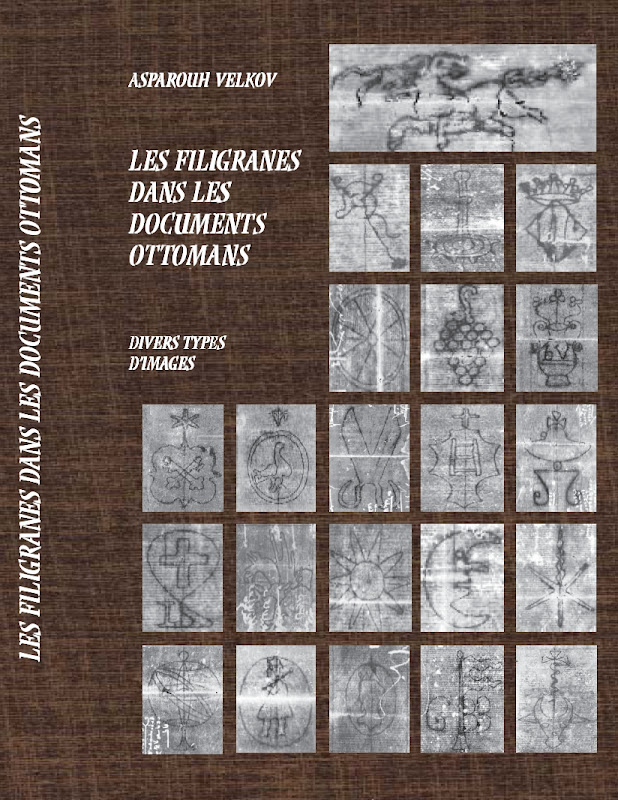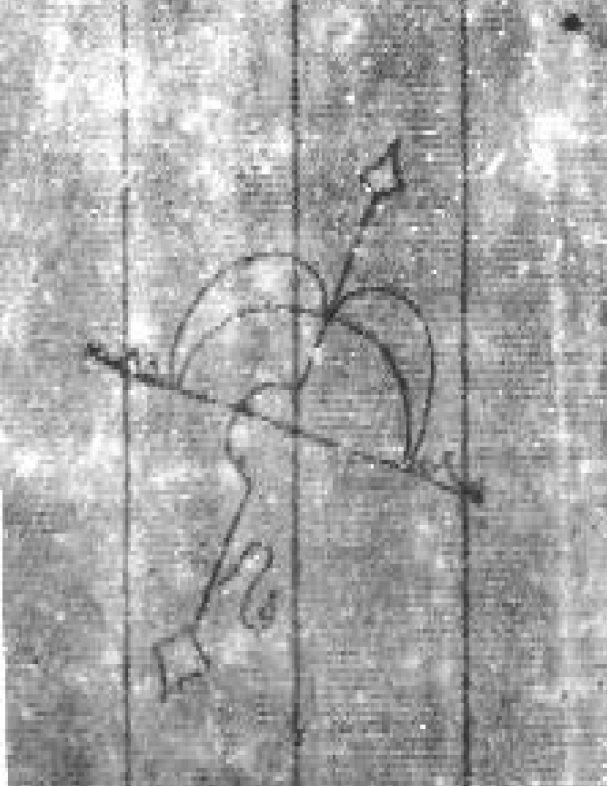The Watermarks in the Ottoman Documents (volume 2)
 Asparuh VELKOV, The Watermarks in the Ottoman Documents v. 2, Different Types of Drawings; Edition 2005 (available only in French)
Asparuh VELKOV, The Watermarks in the Ottoman Documents v. 2, Different Types of Drawings; Edition 2005 (available only in French)
price: 55 €; contact us at 
This work is an album (409 pp., format A4) meant for all scholars wishing to perfect and expand their knowledge of Filigranology further.
The edition could also be of help to any scholar in need of practical aid that would allow them to establish the age and origin of an archival document or manuscript, written on paper not displaying the date of writing for various reasons, such as deterioration of the paper, carelessness on the part of the writer, etc.
The consumption of paper bearing watermarks and countermarks (transparent imprints) is limited historically . This is why we have recourse to the following method of dating: we infer the date of writing of an archival document or manuscript by comparing it with another dated one, bearing the same watermark or countermark.
This publication was conceived as a reference work on the subject of watermarks and countermarks displaying a large variety of drawings selected from the archives of the Department of Orientalism of the “St. St. Cyril and Methodius” National Library in Sofia. The Department possesses more than 910 000 administration documents' pages delivered by the Ottoman Chancellery. The watermarks and countermarks in the work are reproduced from precisely dated original documents, or from valid copies of them, written during the 15 th – 18 th C. E. period.
Certain watermarks also appear on the paper of Slavonic manuscripts from the same period. The various drawings available to us are on Italian, French, German, and Ottoman paper.
The watermarks have been reproduced through photography (by the author himself), a more faithful method than that of manual reproduction. The photos have been taken by the so-called “contact print” technique, which ensures an exact 1 : 1 correspondence between the photo and the original. The watermarks, the frame wires, certain particularities of the paper (thick parts, flat fibres, etc.), as well as deterioration caused by the passage of time (insect holes, paper grub, mauve or brown spots, dampness, etc.) stand out in the light on the blue prints obtained in this way.
The presented watermarks are grouped in 43 classes in French alphabetical order: Paschal lamb, Eagle, Anchor, Ring, Crossbow, Bow, Coat of Arms, Weighing machine, Circle, Hat, Horse, Scissors, Keys, Bell Comet, Crescent, Cross, Ladder, Anvil, Standard, Star, Arrow, Flower, Griffon, Man, Lantern, Leopard, Letters, Lion, Hand, Bludgeon, Centipede, Tops, Proper names, Bird, Jar, Grape, Wheel of a chariot, Siren, Sun, Armillary sphere, Bull's head, and Human head.
The inventory of watermarks contains an article devoted to each drawing comprising the following elements: alphabetical order number, dimension of the document page, place of delivery of the document, date, type of document, code and note, in the cases where the central watermarks are accompanied by complementary drawings which merit particular attention in that they enable a more precise dating of the paper.
In the album, the order of offered watermarks corresponds to that of the inventory. The drawings are accompanied by an order number and the date of the document from which they have been reproduced. The countermarks, the secondary watermarks, and the other complementary drawings that accompany the central watermarks are marked with an A or a B letter beside the number of order.
The album contains 1074 central drawings, 118 countermarks, letters and names, and 20 secondary watermarks, that is, 1212 drawings altogether.
To help the reader use the elements complementary to the central watermarks (letters, initials, words, countermarks, etc.), the former are presented in two indices in lower case.


